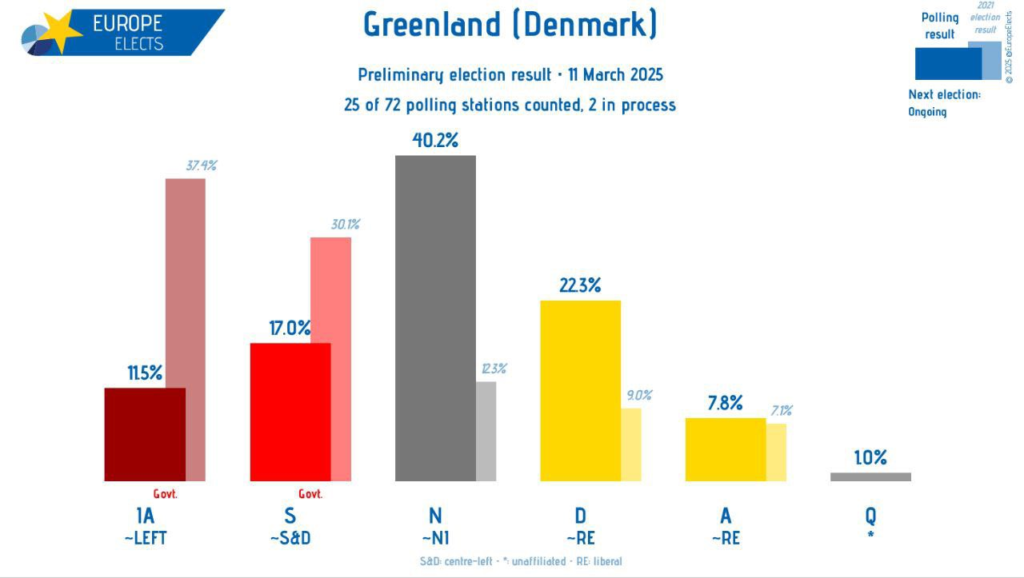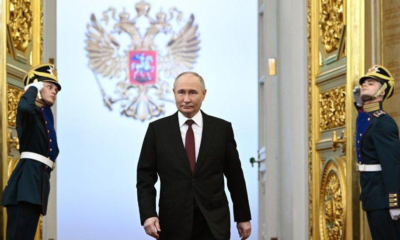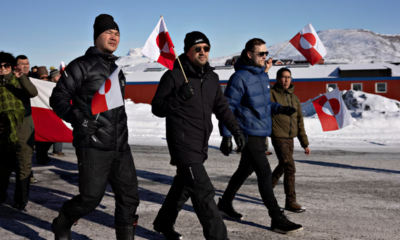Breaking News
Greenland Drifts Toward U.S. Influence, Step by Step

Pro-Independence, Pro-USA Party Surges in Greenland Election
Nuuk, Greenland – March 11, 2025 – Greenland’s political landscape is shifting as preliminary election results show a significant surge for the pro-independence and pro-USA party, Demokratiit (D). The party has gained 22.3% of the vote, a remarkable rise from its previous 9.0% in 2021. This result positions Demokratiit as a key player in Greenland’s future political trajectory, challenging the traditionally dominant parties.
The election, held on March 11, 2025, has so far counted votes from 25 out of 72 polling stations, with two still in process. The results indicate a major reshuffling of Greenlandic politics, with the ruling left-leaning parties suffering heavy losses.

Decline of the Incumbent Government
The ruling coalition, consisting of the socialist party Siumut (S) and the left-wing Inuit Ataqatigiit (IA), has seen a steep decline in support. Siumut, a historically dominant force in Greenlandic politics, dropped from 30.1% in 2021 to just 17.0%, while Inuit Ataqatigiit fell from 37.4% to 11.5%. These figures mark a major setback for the government, raising questions about its ability to maintain control.
The Rise of Independents and New Forces
The biggest winner of the night appears to be the independent party Naleraq (N), which has surged to a commanding 40.2%, more than tripling its 2021 result of 12.3%. Naleraq, known for its strong pro-independence stance, has been a vocal critic of Greenland’s ties to Denmark, advocating for a closer relationship with the United States instead.
The liberal-leaning Atassut (A) saw a slight increase, moving from 7.1% to 7.8%. Meanwhile, another new unaffiliated party, Q, has entered the race with 10% of the vote, reflecting a growing diversity in Greenlandic politics.
Implications for Greenland’s Future
With a clear shift towards nationalist and pro-independence parties, the election results may accelerate discussions about Greenland’s future outside the Kingdom of Denmark. The gains made by Demokratiit and Naleraq suggest increasing public support for closer ties with the United States and a greater push for autonomy.
The results are still preliminary, with more than half of the polling stations yet to be counted. However, early trends indicate that Greenland’s political future is heading in a new direction—one that could redefine its relationship with Denmark and the broader Arctic geopolitical landscape.


















